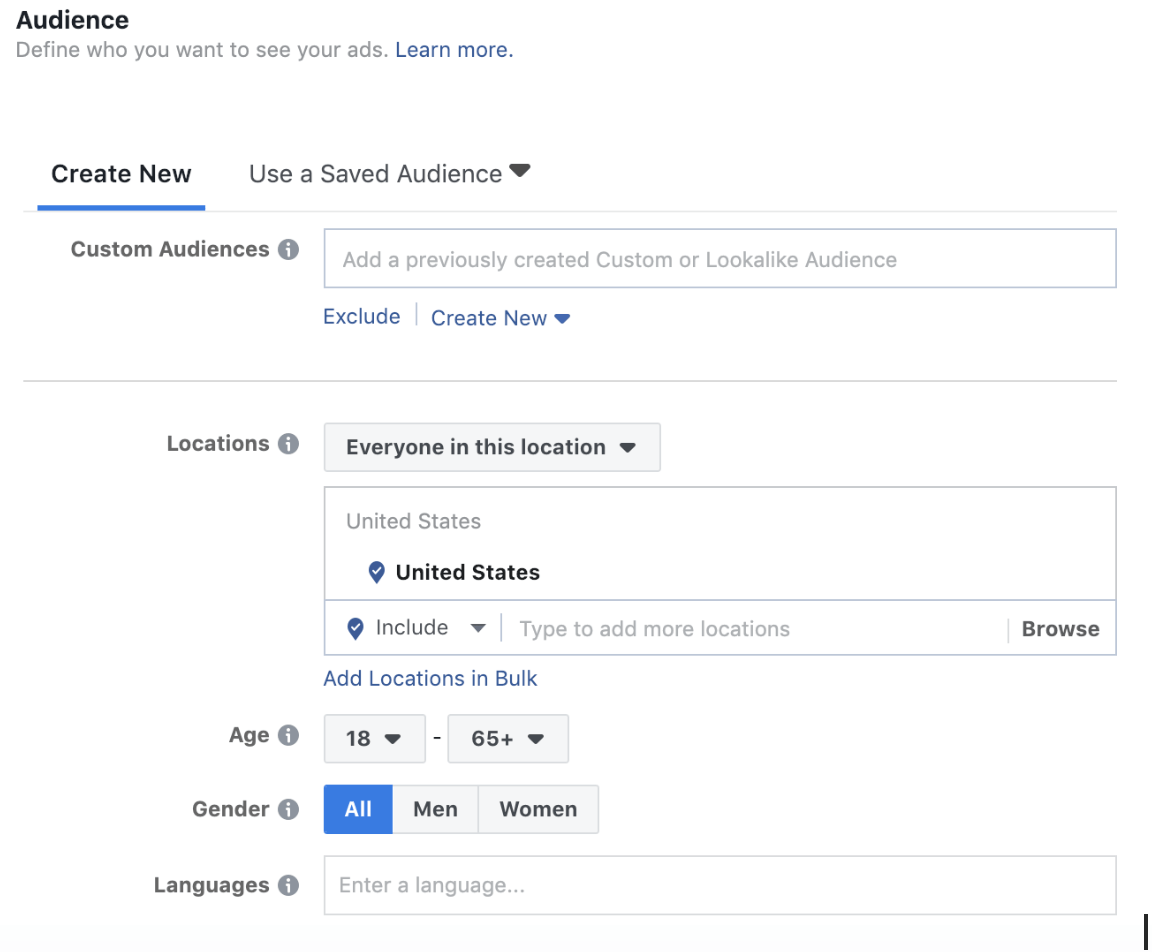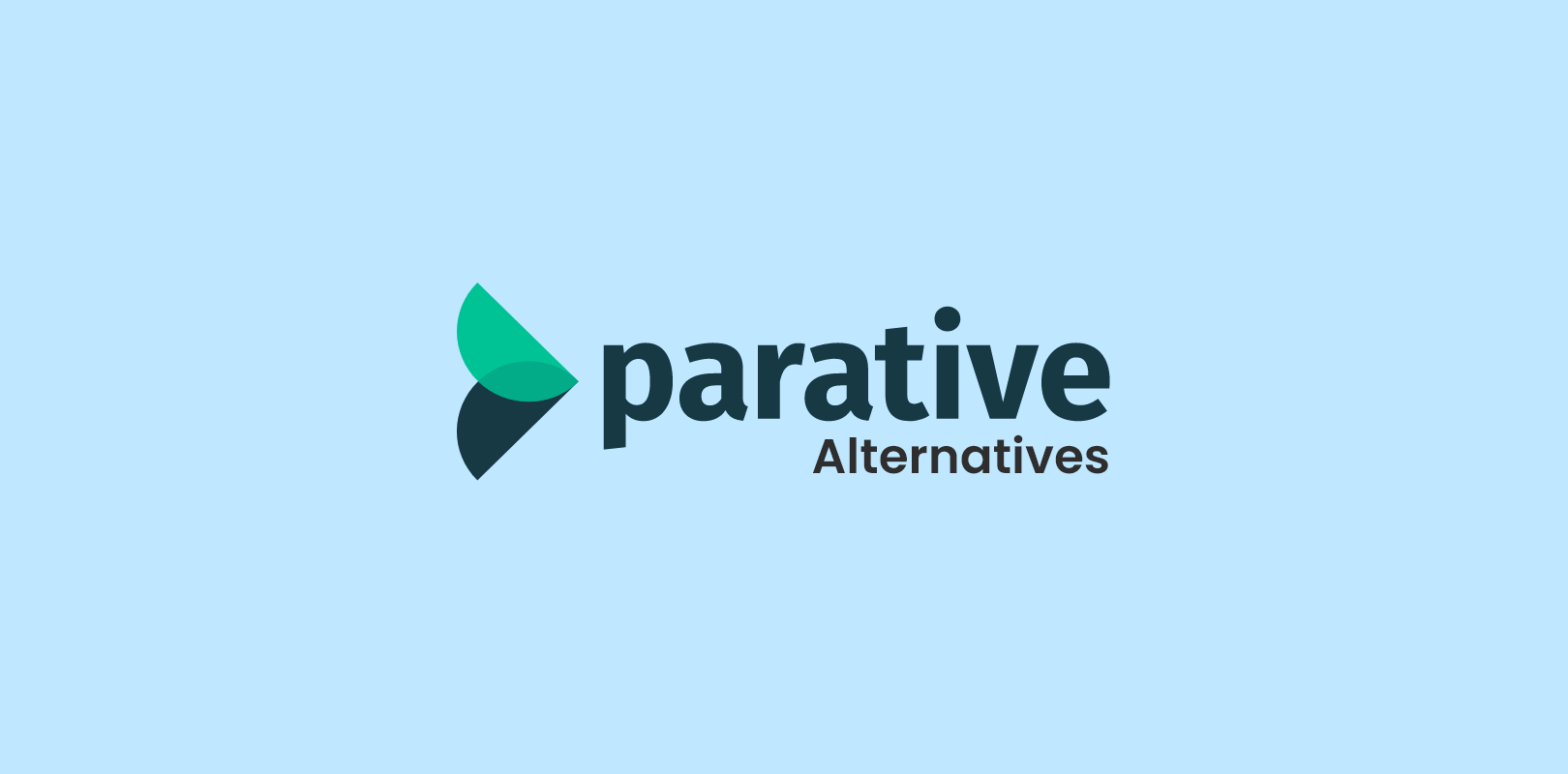I have been using Userpilot for quite some time, and it has consistently met many of my expectations. However, I believe it could enhance its service in several key areas. More customization options for onboarding flows, superior analytics, and a more intuitive user interface would greatly increase its utility.
I have explored several other Userpilot alternatives to see more features and possibly find a better fit for my needs.
In this guide, I will share the top 9 competitors to Userpilot to help you find the tools that best meet your specific requirements.
Which Is the Best Userpilot Alternative?
I would say there are so many factors that go into choosing the right alternative.
However, if you are short on time and want a quick answer to the best alternative, I have listed my top three choices: Qualaroo, Qualtrics, and Pendo.
Option A: Qualaroo
I find Qualaroo indispensable for capturing real-time user feedback directly on the website or app. Its smart targeting capabilities allow me to engage users contextually without disrupting their experience, leading to higher response rates and more accurate insights. I chose Qualaroo because it enhances customer satisfaction and drives conversions efficiently.
Option B: Qualtrics
Qualtrics stands out as the best tool for large surveys with its plethora of advanced features, which is perfect for big companies. This platform makes it easy for me to design surveys that adapt based on the respondent’s answers. For me, the clear insights and operational ease it provides are crucial.
Option C: Pendo
Pendo excels in launching targeted in-app surveys, offering a robust solution for engaging users and gathering insightful feedback within the app itself. The high response rates, often much greater than traditional methods, are due to Pendo’s strategic delivery of surveys where users are most active. I find its customizable features and real-time feedback capabilities vital for timely insights that inform product improvements and enhance user experiences.
This is my personal choice; please go through the whole list if you want to explore other options.
List of Userpilot Alternatives and Competitors
I have curated this list based on my own experiences, insights from peers who have been long-time customers, and evaluations from unbiased third-party websites.
1. Qualaroo – Best for User & Customer Feedback Surveys via Website or App
I find Qualaroo to be an indispensable tool for capturing real-time user feedback directly on the website or app. Its innovative targeting capabilities allow me to engage with users contextually without disrupting their experience, leading to higher response rates and more accurate insights.
Qualaroo’s sentiment analysis, which includes the Net Promoter Score (NPS), Customer Satisfaction Score (CSAT), and Customer Effort Score (CES), helps me gauge the emotional tone behind user responses. This enables me to identify and address any pain points quickly.
As one of the Userpilot alternatives, the tool offers detailed analytics that informs my UX decisions. By leveraging Qualaroo, I’ve been able to refine our product’s usability, enhance customer satisfaction, and ultimately drive conversions.
Qualaroo stands out with its ease of use, flexibility, and depth of insights it provides, making it a top choice for businesses focused on growth through customer-centric strategies. Honestly speaking, I found Userpilot pricing to be on the higher side, and it does not have a free plan. This is also another reason why I find Qualaroo to be a good alternative to this tool.
What you will like
- Launch surveys at critical times using precise targeting and conditional logic.
- Initiate surveys based on user behaviors, geographic location, and technology used, ensuring they’re always relevant.
- A sidebar widget provides a persistent option for users to share their feedback.
- Supports over 70 languages, perfect for gathering global feedback.
- Easy integration with Salesforce, Hootsuite, and Slack to simplify data management.
What you may not like
- A wider selection of templates tailored to specific industries would improve customization.
- More choices for exporting data in different formats would be advantageous.
Pricing: Qualaroo offers a forever free plan for startups and small businesses with all premium features. Paid starts at $19.99/month.
2. Qualtrics – Enterprise-level surveys with advanced features.
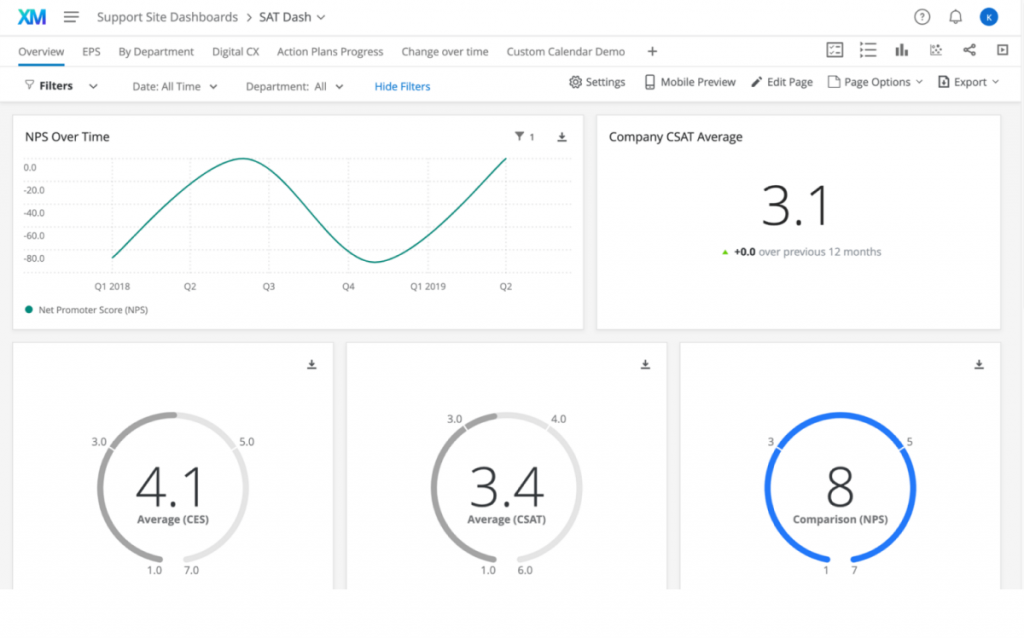
I find Qualtrics to be the best tool for big surveys. It has many advanced features that are perfect for large companies. This platform lets me collect and analyze complex data easily, which is crucial for gathering insights.
With Qualtrics, I can create surveys that change based on the answers, making them more engaging and effective. The user-friendly interface makes designing these surveys simple. The analytics are powerful, helping me spot trends and make intelligent decisions. It integrates well with other systems, which makes my job easier and helps me work more efficiently.
Qualtrics is great for any project, from customer satisfaction to employee feedback. It lets me dive deep into the data, leading to growth and new ideas. For me, efficiency and clear insights are key, and Qualtrics delivers both.
What you will like
- Combines sophisticated quantitative and qualitative research tools in one platform.
- Its iQ artificial intelligence engine delivers deep insights from data.
- Many users find Qualtrics intuitive and adaptable, particularly when creating custom reports.
- Known for fast results, Qualtrics also allows for simultaneous email link distribution.
What you may not like
- Issues like bugs, limited flexibility, and poor administrative experiences have been reported.
- The cost can be prohibitive, especially for smaller data projects.
- Some users feel it is overly complex and not suitable for all needs.
Pricing: Custom pricing
Also Read: 11 Best Qualtrics Alternatives & Competitor in 2025
3. Pendo – Best for Launching Targeted In-App Surveys
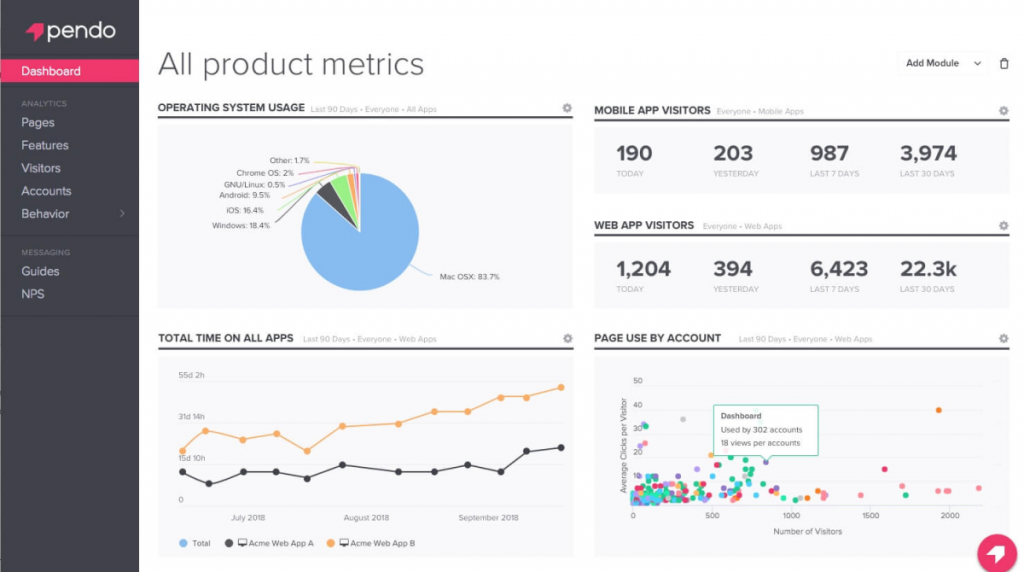
Pendo excels as a platform for launching targeted in-app surveys, providing a robust solution for businesses to engage with their users and gather insightful feedback. Its in-app survey feature allows for hyper-targeted questioning, ensuring that feedback is relevant and comes from the right users.
With Pendo, companies can enjoy high response rates, sometimes as much as 50%, which is significantly higher than traditional email surveys. This is primarily due to Pendo’s ability to deliver surveys directly within the application, capturing users’ attention where they are most active. Moreover, Pendo’s surveys are customizable, allowing for a variety of question types and responses that can be tailored to specific user segments based on activity, preferences, and more.
Being one of the top Userpilot alternatives, the platform also supports real-time feedback, which is crucial for timely insights that can drive product improvements. By matching qualitative feedback with product usage data, Pendo helps businesses identify areas for enhancement, which leads to better user experiences and increased app adoption.
What you will like :
- The interface is modern, intuitive, and easy to navigate, improving the user experience.
- Recognized for its excellent customer support and responsive and helpful team.
- Offers powerful analytics tools that provide insights into user behavior and aid in product development.
- There are various templates and customization opti
- ons available to adapt the platform to specific needs.
What you may not like :
- Some users report a steep learning curve to leverage all features fully.
- Configuring Pendo for certain applications, such as those using Angular, can be difficult.
- Deploying guides can be problematic if the application has an unconventional structure.
Pricing: Starts at $0 (up to 500 monthly active users). Paid plans start at $3,500/yr.
4. Rapidr – Best for Product Feedback and Feature Request Management
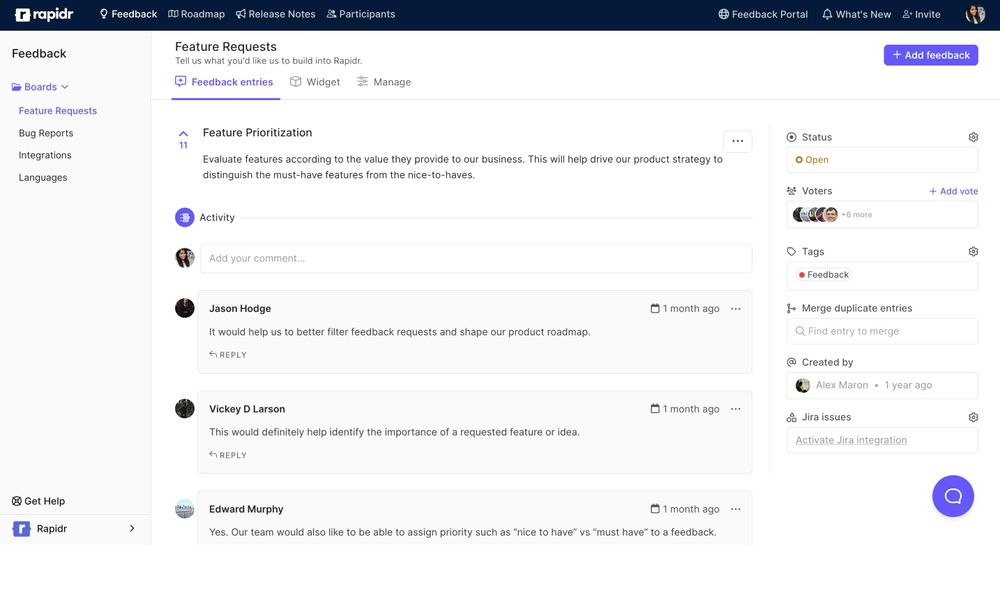
Another Userpilot competitor I’d recommend is Rapidr. Though I haven’t tried it, some of my peers appreciate the tool for the way it helps businesses handle product feedback and feature requests. It’s designed to be incredibly user-friendly, where customers can communicate their thoughts and suggestions directly to the product teams. This transparent system makes users feel valued and part of the product’s evolution.
For product managers, Rapidr offers a structured and efficient method to gather, prioritize, and act on customer feedback. The clean and intuitive dashboard presents data in an easily digestible format, which helps teams to identify trends and make informed decisions that align with their users’ desires.
By implementing Rapidr, companies can expect a significant enhancement in customer satisfaction and engagement, as it fosters a collaborative community where feedback is not just collected but actively shapes the future of the product. In a market where customer-centric development is key to success, Rapidr stands out as a vital tool for any organization aiming to stay ahead of the curve and continuously improve its offerings based on real user insights.
What you will like
- Collect and organize feedback from product teams efficiently.
- The tool is flexible in capturing customer feedback and internal team ideas and prioritizing sprints.
- Features like Slack integration help alert teams about new tickets, enhancing collaboration.
- Rapidr is more affordable than other tools, making it accessible for small businesses.
What you may not like
- As a relatively new tool, it may lack the polish or features of more established alternatives.
- The tool might not scale well for larger projects or teams, which could restrict its usefulness as your organization grows.
- It demands a skilled team to manage its rapid development cycle, which might not be available in all companies.
Pricing: Starts at $49/month
Also Read: 8 Best Rapidr Alternatives & Competitors for 2025
5. Appcues– Best for Collecting Actionable Feedback at Scale
I often recommend Appcues to my clients for its exceptional capability to collect actionable feedback. This tool allows companies to engage directly with users within their app environment, using no-code solutions and customizable surveys. Appcues makes it easy to create in-app prompts and NPS surveys that provide valuable insights into user behavior, preferences, and challenges.
The feedback gathered is a vital resource for product development. With targeted surveys and smart segmentation, Appcues ensures that the right users provide feedback at the optimal times. This timely and relevant data helps businesses make informed decisions to enhance their products.
Many companies find Appcues invaluable because of its user-friendly design and flexible targeting options. Additionally, its ability to track user sentiment alongside product usage offers a comprehensive view of customer satisfaction. For any product-led organization looking to maintain a competitive edge, understanding customer satisfaction through Appcues is essential.
What you will like
- Helps you create beautiful and interactive product walkthroughs, providing an engaging onboarding experience.
- Known for excellent customer support.
- The no-code builder allows you to create onboarding flows and publish in-app announcements easily.
- Offers many pre-designed templates for various UI patterns, which simplifies the creation of product tours, in-app tutorials, and announcements.
What you may not like
- Despite a friendly user interface, there is a steep learning curve requiring technical knowledge.
- Some users have experienced unexpected price increases.
- Occasional interface issues can result in lost work.
Pricing: Starts at $249/month
6. Intercom– Best for AI First Customer Service Solution
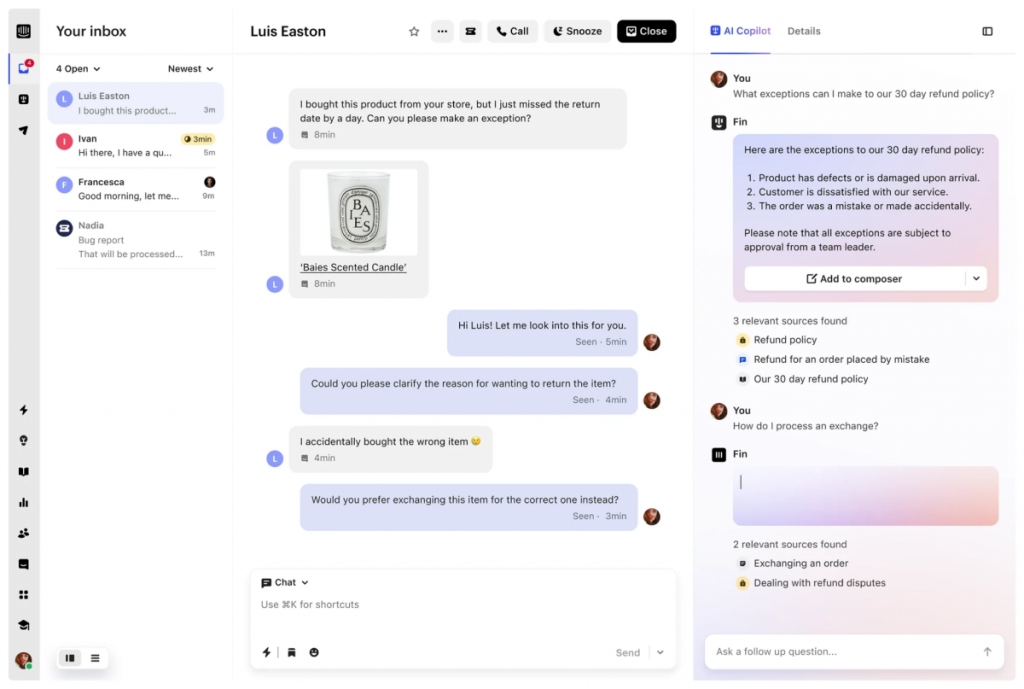
AI is the new buzz in customer service, and Intercom leads the way with its AI-first approach. This platform harnesses advanced artificial intelligence to enhance and streamline customer interactions. By automating routine tasks, it frees up human agents to tackle more complex issues, thus speeding up response times and boosting customer satisfaction.
This AI-first strategy ensures that customers receive instant support around the clock while support agents enjoy augmented capabilities to perform their duties more efficiently. The robust AI system not only responds to present needs but also adapts and learns from each interaction.
Moreover, the extensive features of the platform, including omnichannel support, automated workflows, and proactive outbound messaging, stand out as particularly beneficial. These tools collectively contribute to a richer, more responsive customer experience, regardless of the channel they choose to use. The commitment to providing a holistic view through detailed AI-driven insights and reports helps leaders make informed decisions. This approach not only redefines customer service paradigms but also demonstrates forward-thinking leadership in harnessing technology for exceptional customer interactions.
What you will like
- Enables businesses to engage directly with customers using robust messaging and automation tools.
- It helps teams expand support capabilities without a significant increase in resources.
- Provides live chat widgets that businesses can customize to meet their specific needs.
- Offers omnichannel support, ensuring a consistent customer experience across various platforms.
What you may not like
- There are instances of unsatisfactory support and customer service following purchase.
- Accessing certain features, like product tours, requires additional add-ons, which can lead to higher expenses.
- The standard version of Intercom may not meet all the needs of some businesses, pushing them to invest in more add-ons.
Pricing: Starts at $39/seat/month
7. Whatfix– Best for Guidance Analytics
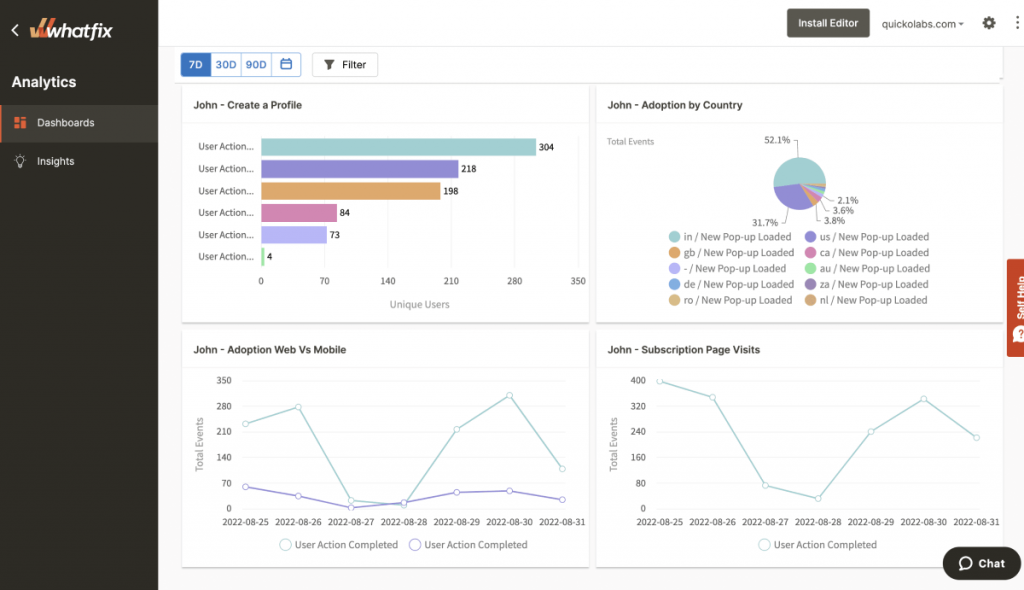
Whatfix emerges as a powerful alternative to Userpilot, especially for organizations seeking in-depth guidance analytics. As a Digital Adoption Platform (DAP), Whatfix excels at crafting interactive product tours and workflows without any coding required. This user-friendly approach makes it accessible to a broad range of users, regardless of their technical background.
What truly sets Whatfix apart is its robust analytics suite. The platform meticulously segments user data into three categories: behavior analytics, guidance analytics, and feedback analytics. This granular breakdown empowers users to gain a clear understanding of how users interact with the product and assess the effectiveness of the implemented guidance.
Furthermore, Whatfix incorporates in-app feedback surveys, enabling real-time user input and insights. This continuous stream of user feedback is vital for making ongoing product improvements and ensuring a positive user experience. By understanding user needs and pain points, businesses can refine their product offerings and drive user satisfaction.
What you will like
- No-code walkthrough creation makes Whatfix user-friendly for anyone.
- Whatfix’s robust analytics provide deep insights into user behavior and guidance effectiveness.
- In-app feedback surveys in Whatfix capture real-time user thoughts for product improvement.
- Self-service options through Whatfix can potentially reduce dependence on customer support.
What you may not like
- Managing a large amount of content within Whatfix requires a clear organizational strategy.
- Customization options for walkthroughs and the user interface might be limited in Whatfix.
- Advanced features in Whatfix might have a steeper learning curve.
Pricing: Custom pricing
8. Zoho – Best for Zoho Suite Users

Zoho simplifies the process of gathering user feedback, making it a preferred choice for many organizations. It supports a variety of question types, such as multiple choice, rating scales, and matrix grids, which allow for precise data collection tailored to specific needs. Zoho Survey enhances survey dynamics with advanced logic and branching, adapting questions based on respondent inputs.
It further enriches user experience with robust data analysis and reporting tools, including detailed visualizations and versatile export options. Additionally, its collaboration features let multiple users work on surveys together, and its multi-channel distribution capabilities mean you can share surveys via email, social media, and websites.
As one of the leading Userpilot alternatives, Zoho stands out with its user-friendly features and cost-effective pricing. While Userpilot presents a steep learning curve and higher costs, Zoho counters with a straightforward interface and a robust set of tools that enhance analytics and user engagement at a more reasonable price. Zoho offers a comprehensive package that better meets the needs of businesses seeking efficient and effective survey solutions.
What you will like
- Every Zoho plan includes automation capabilities, assisting businesses in streamlining operations.
- Zoho can integrate with numerous third-party applications, including Mailchimp, Google Analytics, and QuickBooks.
- It offers a mobile application that allows users to manage their CRM activities from anywhere.
- Zoho’s pricing structure is designed to be affordable, catering to businesses of varying sizes.
What you may not like
- Artificial intelligence features in Zoho are restricted to the more expensive plans not accessible to users on basic plans.
- Most of Zoho’s plans have restricted file storage, except for the Enterprise plan, which includes 5GB.
- New users might initially find the platform challenging, though it is generally user-friendly once familiarized.
Pricing: Free plan available (limited to 10 questions/surveys). Paid plans start at $7.20/month.
9. UserGuiding – Best for User Segmentation
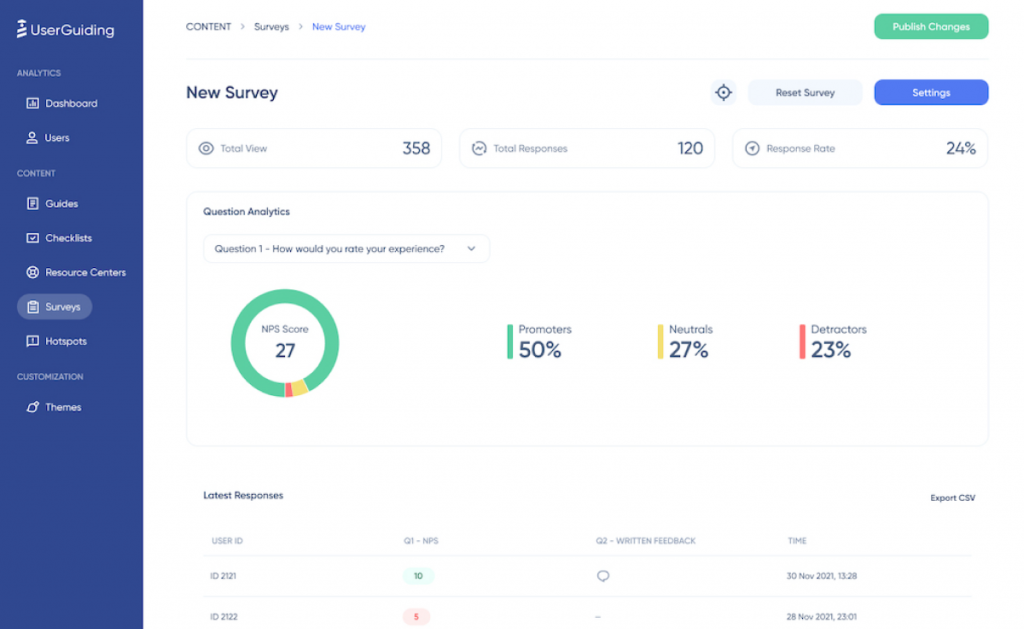
UserGuiding offers a robust solution for businesses looking to enhance user onboarding and engagement through its segmentation feature. This tool allows companies to provide personalized onboarding experiences by segmenting users based on various attributes, thus catering to their specific needs. By examining user details and customizing segments, businesses can tailor in-app content precisely, significantly boosting user adoption and reducing friction during the onboarding process.
One of the standout features of UserGuiding is its ability to target disengaged users specifically. By creating tailored content to re-engage these users, companies can address and smooth out specific pain points, enhancing overall user satisfaction. The platform is not only user-friendly but also quick to implement, with users able to create their first guide within minutes and see potential increases in activation rates by up to 25%.
Moreover, UserGuiding integrates several additional tools that contribute to a comprehensive user experience strategy. These include Resource Centers, which consolidate all educational content in one place, and Onboarding Checklists, which help improve conversion rates by clearly outlining the next steps users should take.
What you will like
- The platform is crafted for simplicity, enabling users with no technical background to craft interactive guides effortlessly.
- Tailored checklists are available to steer users through the initial setup process.
- Offers analytical tools to monitor the effectiveness of guide flows and their influence on keeping users engaged.
- The service provides options for customizing user experiences based on different user segments.
What you may not like
- A degree of technical understanding is required to use all its features.
- Users with limited technical skills might find customization options somewhat restricted.
- Certain plans, particularly the more economical ones, may impose limitations on features.
Pricing: Starts at $89/month
Evaluation Criteria
The evaluation of products or tools chosen for this article follows an unbiased, systematic approach that ensures a fair, insightful, and well-rounded review. This method employs six key factors:
- User Reviews / Ratings: Direct experiences from users, including ratings and feedback from reputable sites, provide a ground-level perspective. This feedback is critical in understanding overall satisfaction and potential problems.
- Essential Features & Functionality: The value of a product is ascertained by its core features and overall functionality. Through an in-depth exploration of these aspects, the practical usefulness and effectiveness of the tools are carefully evaluated.
- Ease of Use: The user-friendliness of a product or service is assessed, focusing on the design, interface, and navigation. This ensures a positive experience for users of all levels of expertise.
- Customer Support: The quality of customer support is examined, taking into account its efficiency and how well it supports users in different phases – setting up, addressing concerns, and resolving operational issues.
- Value for Money: Value for money is evaluated by comparing the quality, performance, and features. The goal is to help the reader understand whether they would be getting their money’s worth.
- Personal Experience / Experts’ Opinions: This part of the evaluation criteria draws insightful observations from the personal experience of the writer and the opinions of industry experts.
FREE. All Features. FOREVER!
Try our Forever FREE account with all premium features!

 We'd love your feedback!
We'd love your feedback! Thanks for your feedback!
Thanks for your feedback!



